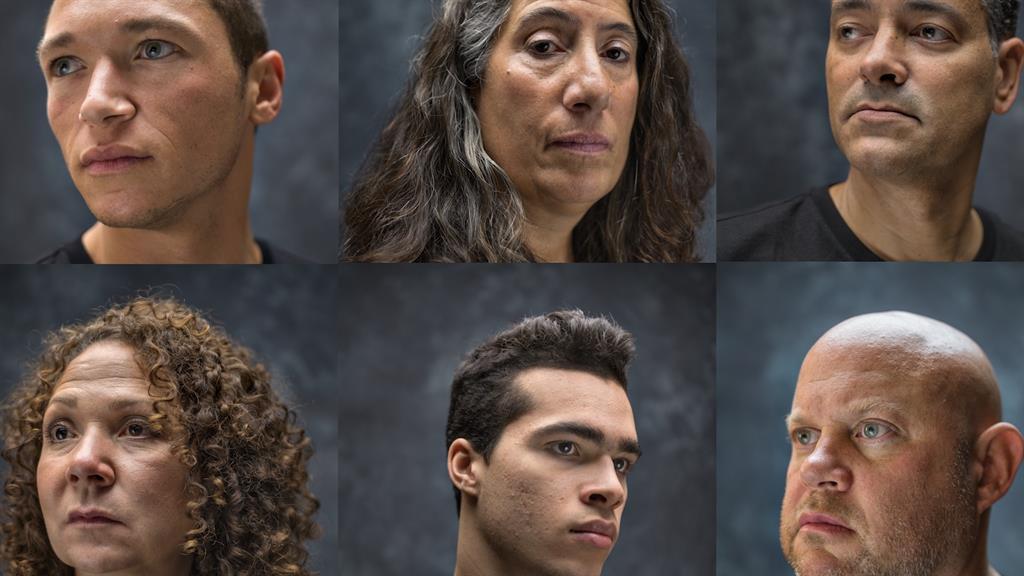https://www.blogger.com/blogger.g?blogID=4068553338055038448#editor/target=post;postID=5732602315750212567;onPublishedMenu=allposts;onClosedMenu=allposts;postNum=0;src=link
PEOPLE ALSO ASK
WHAT GENETIC THREAD DO THESE SIX STRANGERS HAVE IN COMMON?
Genetic sequencing has introduced new ways of thinking about human diversity. And this, in turn, has opened up a conversation about the long, tangled, and often brutal history that all of us ultimately share.
You are utterly unique. You have your own fingerprints, your own way of walking, and your own way of talking. Even the shape of your ears and the pattern of your retinas are specific to you. But some traits are more than skin-deep, and it’s possible you have something big in common with total strangers.
These six people may not look the same, but they all share a similar genetic ancestry, according to results from the National Geographic Geno 2.0 DNA Ancestry Kit. Using DNA from a saliva sample, the test shows a person's geographic origins and traces where that person's ancestors migrated hundreds and even thousands of years ago.
These six people had their DNA tested with National Geographic’s Geno 2.0 Ancestry Kit. The results indicate essentially the same “racial” heritage, in the following percentages: 32% Northern European, 28% Southern European, 21% Sub-Saharan African and 14% Southwest Asian/North African.
CAM MEYER, 28, SANTA MONICA, CALIFORNIA
“People have always asked me where I’m from, what my race is, and I was not totally sure. I have a very unique look. So I thought it’d be cool to find out.”
The test revealed that these people are each roughly 32 percent northern European, 28 percent Mediterranean, 21 percent sub-Saharan African, and 14 percent southwest Asian. With some help from the National Geographic Society's Genographic Project, the strangers were able to learn about each other.
"They look like family. That's what they look like. Like, they look like they could be my cousins," Milo Ronald Dehi Johnson, who participated in this experiment, tells National Geographic.
JULIE BOND, 60, RIVIERA BEACH, FLORIDA
“I identify as mixed race. But the world just sees me as white. People will say things to you because they don’t realize your background—racially offensive things.”
Forming Identities
The Genographic Project launched in 2005 to better understand how we're all connected. It uses genetic and computational technologies to analyze historical patterns in the DNA of more than 830,000 participants hailing from 140 countries.
The DNA kit relies on the order of certain genetic markers to chart a participant's evolutionary time line back through generations, says molecular anthropologist Miguel Vilar, the Genographic Project's science manager. Certain traits manifest in genetic markers specific to different populations from different parts of the world.
For example, one gene variant causes people from Africa to have darker skin, because that trait would have protected them against the hot tropical sun. When some of our ancestors migrated north, they developed lighter skin to absorb vitamin D in more sun-starved environments.
JASON CARTER, 50, ARLINGTON, VIRGINIA
“Now that I know about my deep ancestry, I do see people in a different light. Probably hardly anyone will take a DNA test and come up with one thing.”
Genographic scientists wanted to bring together genetically similar strangers to begin to dispel the idea that people can be absolutely categorized into complete races.
"We were just looking at numbers," says Vilar. "They could look the same on a pie chart, and yet they could look very differently and would identify ethnically very differently and racially very differently."
BRENDA YURKOSKI, 50, MINERAL, VIRGINIA
“We still identify as African-American. By law, in early America, I would have had to. I could have tried to pass as white. But if anybody knew any different…”
Bridging the Divide
It’s possible, though rare, for people to share a similar genetic profile; about 120 people in the database have the same overall DNA ancestry. From there the researchers found a few dozen people who also share similar geographic backgrounds, knowing that the larger percentages in their genetic makeup would account for skin color and other physical traits.
Eventually the group was whittled down to six individuals who were then shown photographs of people in the project with whom they shared a genetic profile. The participants are not directly related, and their genes don't stem from a common ancestor.
TY WILHELMSEN, 18, MILTON, MASSACHUSETTS
“My friend group, they’re mostly white, but I’m in the middle. So they usually reference me for ideas that I could tell them about race.”
"When you look at the result as a whole, their ingredients are very, very similar," says Vilar. "Those people have the same amount of ingredients in the DNA, but that doesn't exactly mean that they have the exact same DNA."
Despite this shared genetic past, each participant identifies differently, with some identifying as black, white, mixed race, or something else. If one looks at them as a group, the construct of race melts away, Vilar says, because the numbers don't translate directly to a racial identity.
MILO RONALD DEHI JOHNSON, 44, CHANDLER, ARIZONA
“Growing up, I was surrounded by family who were black, white, other…Looking at the other people who have the same DNA background…[they] look like five of my cousins.”
"Living in America today, we're such a divided society," participant Julie Bond tells National Geographic. "People put so much focus on the physical manifestations of whether it's your hair or your skin color or whatever it might [be], and they make all kinds of judgments about you based on that. And I think that's a very unfortunate circumstance."
Vilar agrees, adding that it is near impossible to guess at someone's racial identity based on their deep genetic mix: "Maybe race is not something easy to categorize to genetics."

That is very interesting I love reading and I am always searching for informative information like this. I am very happy to your post about on. Great information, I would like to say your post is very informative.
ReplyDeletecomt gene test